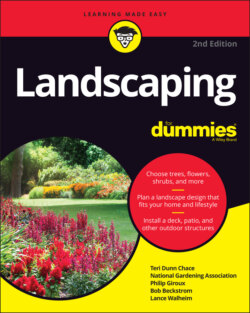Читать книгу Landscaping For Dummies - Lance Walheim - Страница 26
Considering children and pets’ safety
ОглавлениеIf you have children or pets living with you or visiting now and then, their safety isn’t just a matter of showing you care. Their safety can be or become a legal issue. When you have concerns or questions, check with your local municipality or homeowners association.
Here are a few basic principles to bear in mind:
Incorporate raised beds or elevated planter boxes (for flowers as well as vegetables or herbs). Kids and pets tend to prefer flat, easily accessible areas.
Take out, and don’t plant, any plants known to have poisonous leaves or berries. Look them up; the information is readily available online. Cross-check with the American Association of Poison Control Centers. When in doubt, err on the side of caution and remove/avoid.
Avoid planting thorny bushes or trees, especially in high-traffic areas. These obstruct sightlines and access and also can snag or scratch skin and clothing.
Monitor children and pets when they are in the yard. Doing so is especially important if you lack fences or have a water feature.
Never leave your tools, supplies, or sprays lying about … or even accessible. Kids are curious, and these items are often hazards. Better safe than sorry — put stuff away, up high, out of reach. If you’ve decanted garden chemicals or sprays into other containers (jugs, jars, sprayers), be sure they’re both clearly labeled and stored out of reach.
Don’t set up a play structure or swing set close to trees, fences, or the property line/neighbor’s yards. You don’t want to risk injury or damage, to people or property.
Consider creating areas especially for children and pets, so the rest of the landscape is (ideally) freed up for your many other ideas and plans. Kids need places to play, relax, hide, or make forts. Get them involved in designing their areas and helping you around the yard. (How about a bean-pole teepee? Or a sunflower house?) Perhaps have a storage area or bench for their toys (see the section, “Designating storage areas,” later in this chapter for ideas).
Dogs are creatures of habit and will mark, and lounge, in the same spots, especially if you train them that way. If you create a run or outdoor play yard for a dog, make sure it’s big enough for the breed, has shade/shelter from the hot sun, and is easy to clean. As for sandboxes, if cats are in the area, keep the box covered when not in use (because cats think they’re litter boxes)!
